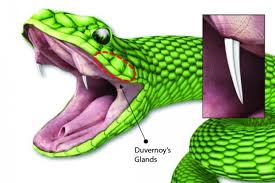
Breaking News
 BrightLearn - Revolutionizing Food: Grow Your Own Freedom...
BrightLearn - Revolutionizing Food: Grow Your Own Freedom...
 VIDEO: Alex Jones Goes Off On Trump, "The Globalists Have Been Deliberately Destroying...
VIDEO: Alex Jones Goes Off On Trump, "The Globalists Have Been Deliberately Destroying...
 Menopause and gut health: Decoding the relationship between hormones and digestive issues
Menopause and gut health: Decoding the relationship between hormones and digestive issues
Top Tech News
 Magnetic Fields Reshape the Movement of Sound Waves in a Stunning Discovery
Magnetic Fields Reshape the Movement of Sound Waves in a Stunning Discovery
 There are studies that have shown that there is a peptide that can completely regenerate nerves
There are studies that have shown that there is a peptide that can completely regenerate nerves
 Swedish startup unveils Starlink alternative - that Musk can't switch off
Swedish startup unveils Starlink alternative - that Musk can't switch off
 Video Games At 30,000 Feet? Starlink's Airline Rollout Is Making It Reality
Video Games At 30,000 Feet? Starlink's Airline Rollout Is Making It Reality
 Automating Pregnancy through Robot Surrogates
Automating Pregnancy through Robot Surrogates
 SpaceX launches Space Force's X-37B space plane on 8th mystery mission (video)
SpaceX launches Space Force's X-37B space plane on 8th mystery mission (video)
 This New Bionic Knee Is Changing the Game for Lower Leg Amputees
This New Bionic Knee Is Changing the Game for Lower Leg Amputees
 Grok 4 Vending Machine Win, Stealth Grok 4 coding Leading to Possible AGI with Grok 5
Grok 4 Vending Machine Win, Stealth Grok 4 coding Leading to Possible AGI with Grok 5
Inexpensive antivenom could reportedly be used by "anyone, anywhere

Traditionally, antivenom is produced by first "milking" venom from the fangs of captive snakes, then injecting small amounts of that venom into animals such as horses. Those creatures respond by producing venom-neutralizing antibodies which are harvested from their blood, purified, then used in the antivenom.
This can be quite a lengthy process, plus the workers who extract the venom run a risk of getting bitten by the snakes. Additionally, the antivenom must be applied intravenously, typically in a hospital or clinic

 Why Politicians Seek Power
Why Politicians Seek Power HERE COMES THE MOTHERSHIP
HERE COMES THE MOTHERSHIP Venus Aerospace Hypersonic Engine Breakthroughs
Venus Aerospace Hypersonic Engine Breakthroughs

